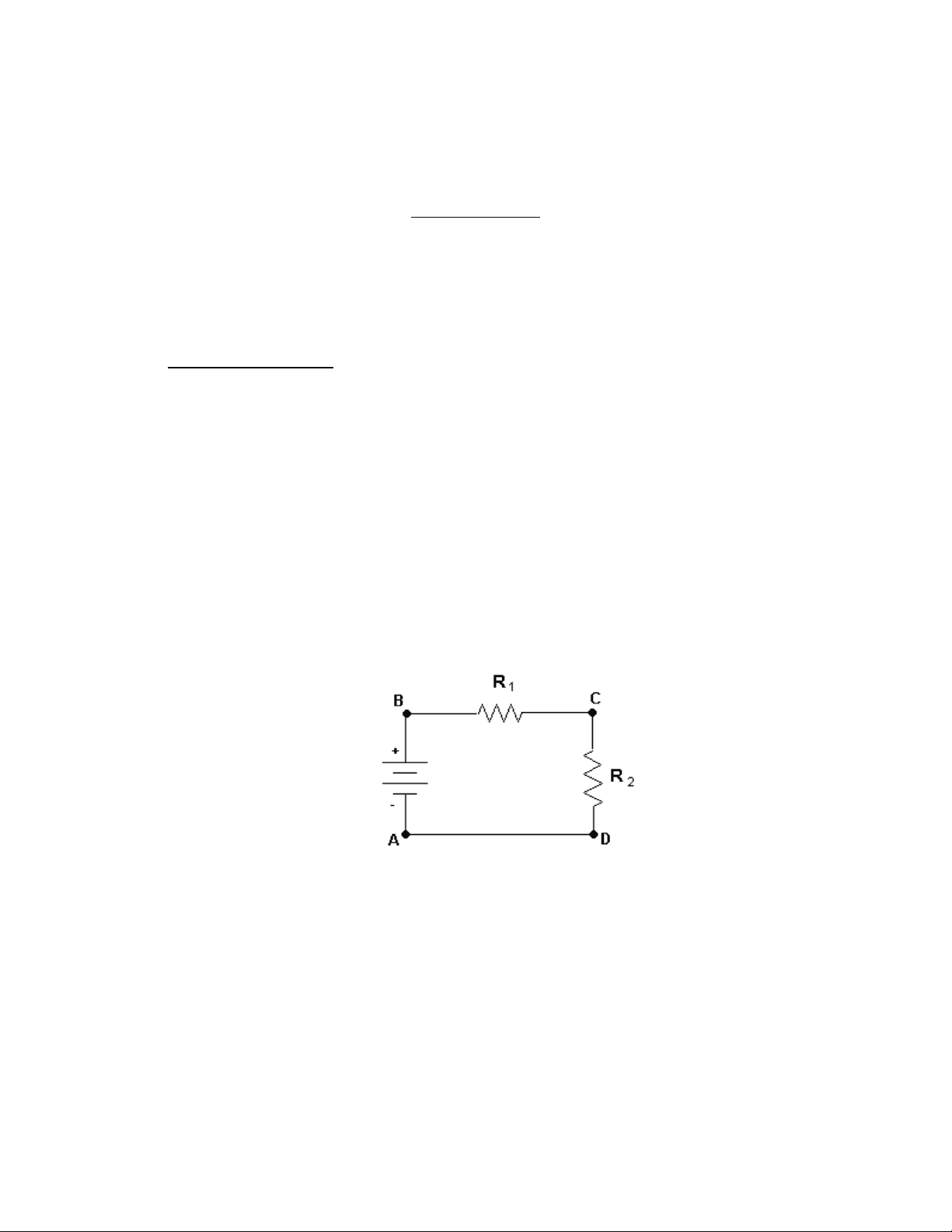
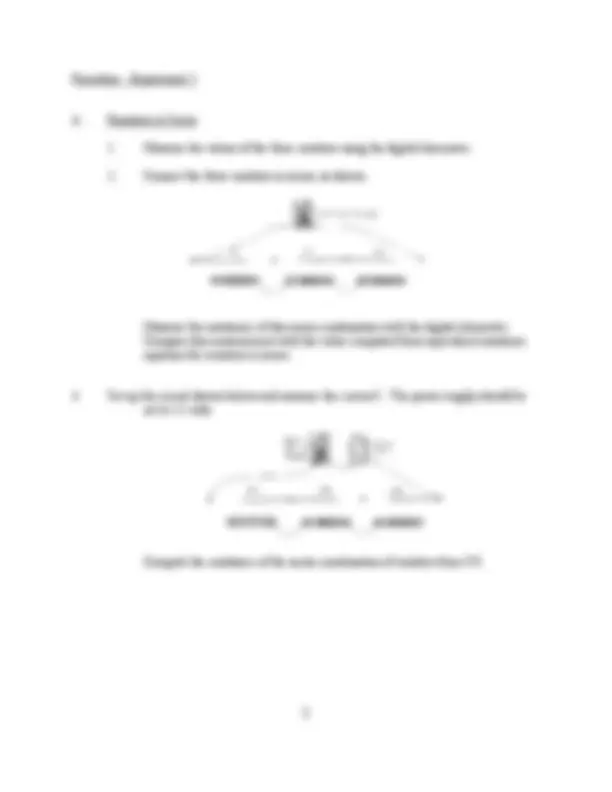
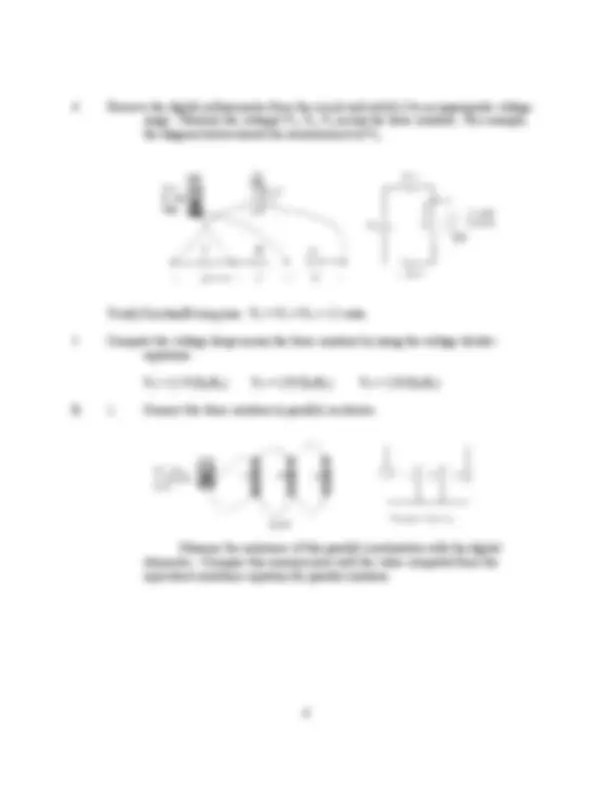
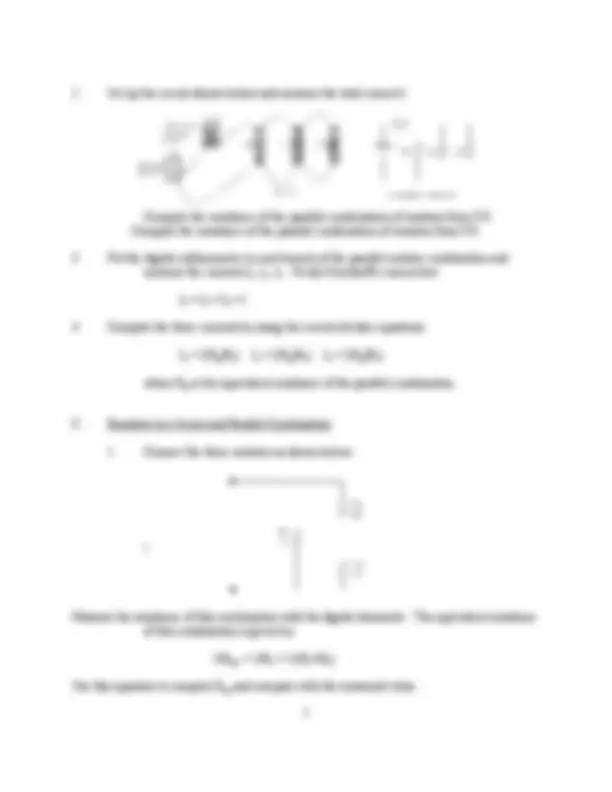
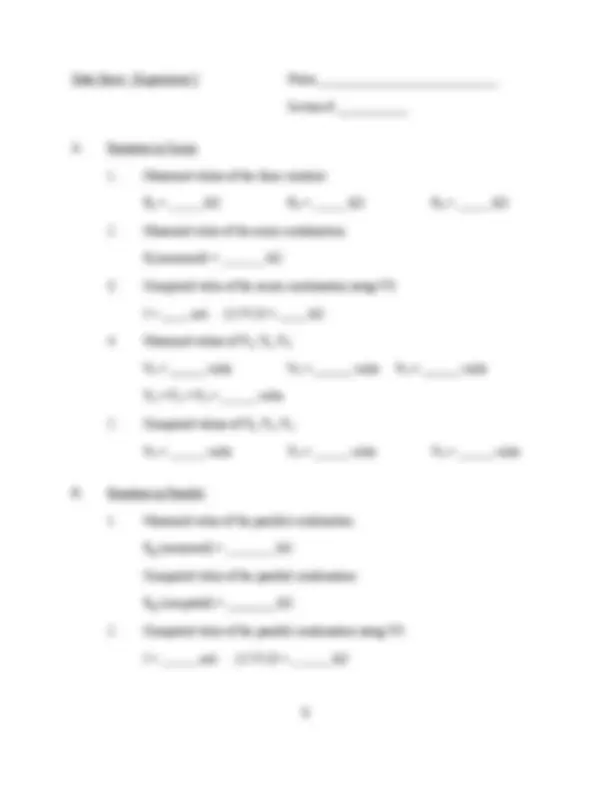
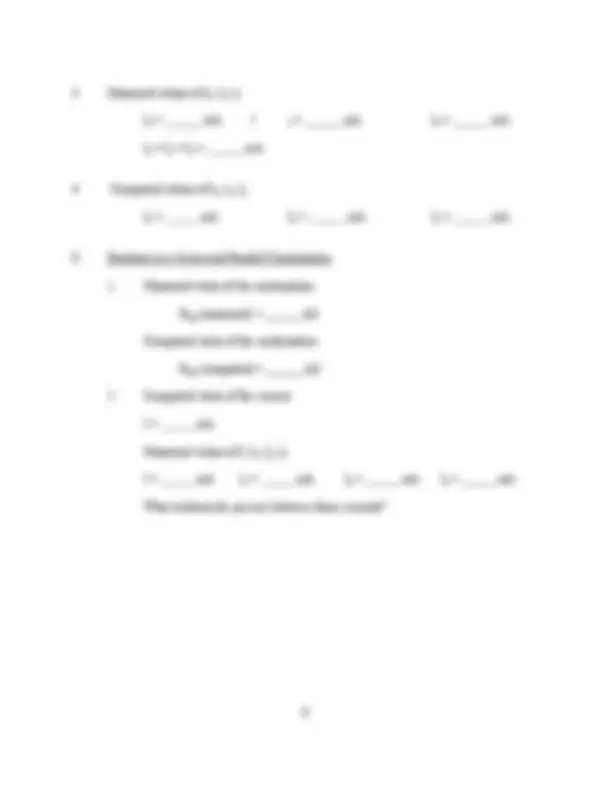
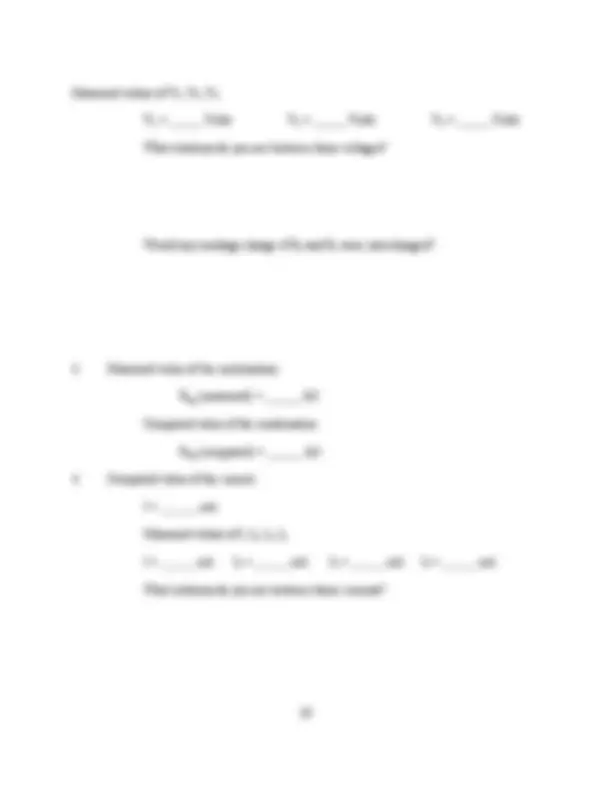


Study with the several resources on Docsity

Earn points by helping other students or get them with a premium plan


Prepare for your exams
Study with the several resources on Docsity

Earn points to download
Earn points by helping other students or get them with a premium plan
Community
Ask the community for help and clear up your study doubts
Discover the best universities in your country according to Docsity users
Free resources
Download our free guides on studying techniques, anxiety management strategies, and thesis advice from Docsity tutors
Material Type: Lab; Class: College Physics Lab II; Subject: Physics; University: Central Michigan University; Term: Unknown 1989;
Typology: Lab Reports
1 / 11

This page cannot be seen from the preview
Don't miss anything!







Experiment 2
Kirchhoff's Laws
Equipment: Digital Multimeter, Power Supply (0-20 V.).
Supplies: Three resistors (Nominally: 1 Kilohm, 2 Kilohm, 3 Kilohm).
A. Kirchhoff's Loop Law
Suppose that a charged particle moves as shown below from point A to point B, then from point B to point C, and then from point C back to point A. Its potential enegy will not have changed since it is back where it started.
Kirchhoff's loop law is an application of this idea: The sum of voltage changes around a closed loop is zero.
Symbolically, the potential changes for the path described are:
(VB-VA) + (VC-VB) + (VA-VC) = 0
As an example, consider a circuit consisting of a voltage source V and two resistors R 1 and R 2 in series.
Start from the negative side of the voltage source and traverse the circuit clockwise.
Kirchhoff's loop law states that
V-IR 1 -IR 2 = 0
Then V = IR 1 + IR 2 V = I(R 1 + R 2 )
The equivalent resistance of R 1 and R 2 in series is
V/I = R 1 + R 2 = Rs
In general, if there are n resistors in series, then the equivalent resistance is given by
Rs = R 1 + R 2 + R 3 + ......... + Rn
B. Kirchhoff's Point Law
The conservation of electric charge, when applied to circuits, gives Kirchhoff's point of law: The net current flowing into a junction equals the net current flowing out.
As an example, consider a circuit consisting of a voltage source connected to two resistors in parallel.
Kirchhoff's current point states that:
I = I 1 + I 2
Kirchhoff's loop law applied to the two loops above states that
V = I 1 R 1 and V = I 2 R 2
The equivalent resistance of R 1 and R 2 in parallel is
V/I = V/(I 1 + I 2 ) = 1/(1/R 1 + 1/R 2 )
= (R 1 R 2 )/(R 1 + R 2 ) = Rp
In general, if there are n resistors in parallel, then the equivalent resistance is given by
1/Rp = 1/R 1 + 1/R 2 + ……………………..+ 1/Rn
Verify Kirchhoff's loop law: V 1 + V 2 + V 3 = 12 volts.
V 1 = 12 V(R 1 /Rs) V 2 = 12V(R 2 /Rs) V 3 = 12V(R 3 /Rs)
B. 1. Connect the three resistors in parallel, as shown.
Measure the resistance of this parallel combination with the digital ohmmeter. Compare this measurement with the value computed from the equivalent resistance equation for parallel resistors.
Compute the resistance of the parallel combination of resistors from V/I. Compute the resistance of the parallel combination of resistors from V/I.
I 1 + I 2 + I 3 = I
I 1 = I(Rp/R 1 ) I 2 = I(Rp/R 2 ) I 3 = I(Rp/R 3 )
where Rp is the equivalent resistance of the parallel combination.
C. Resistors in a Series and Parallel Combination
Measure the resistance of this combination with the digital ohmmeter. The equivalent resistance of this combination is given by:
1/Req. = 1/R 1 + 1/(R 2 +R 3 )
Use this equation to compute Req and compare with the measured value.
Compute the current delivered by the battery using I = V/Req.
Using the digital milliammeter measure I, I 1 , I 2 , and I 3. Switch the meter to an appropriate voltage range and measure V 1 , V 2 , and V 3.
Data Sheet - Experiment 2 Name______________________________
Section # ____________
A. Resistors in Series
R 1 = kΩ R 2 = kΩ R 3 = kΩ
Rs(measured) = kΩ
I = mA. (12 V.)/I = kΩ
V 1 = volts V 2 = volts V 3 = volts
V 1 + V 2 + V 3 = volts
V 1 = volts V 2 = volts V 3 = volts
B. Resistors in Parallel
Rp (measured) = kΩ
Computed value of the parallel combination
Rp (computed) = kΩ
I = mA. (12 V.)/I = kΩ
Measured values of V 1 , V 2 , V 3
V 1 = Volts V 2 = Volts V 3 = Volts
What relations do you see between these voltages?
Would any readings change if R 1 and R 2 were interchanged?
Req (measured) = kΩ
Computed value of the combination
Req (computed) = kΩ
I = mA
Measured values of I, I 1 , I 2 , I 3
I = mA I 1 = mA I 2 = mA I 3 = mA
What relations do you see between these currents?
Measured values of V 1 , V 2 , V 3
V 1 = Volts V 2 = Volts V 3 = Volts
What relations do you see between these voltages?
Would any readings change if R 1 and R 2 were interchanged?